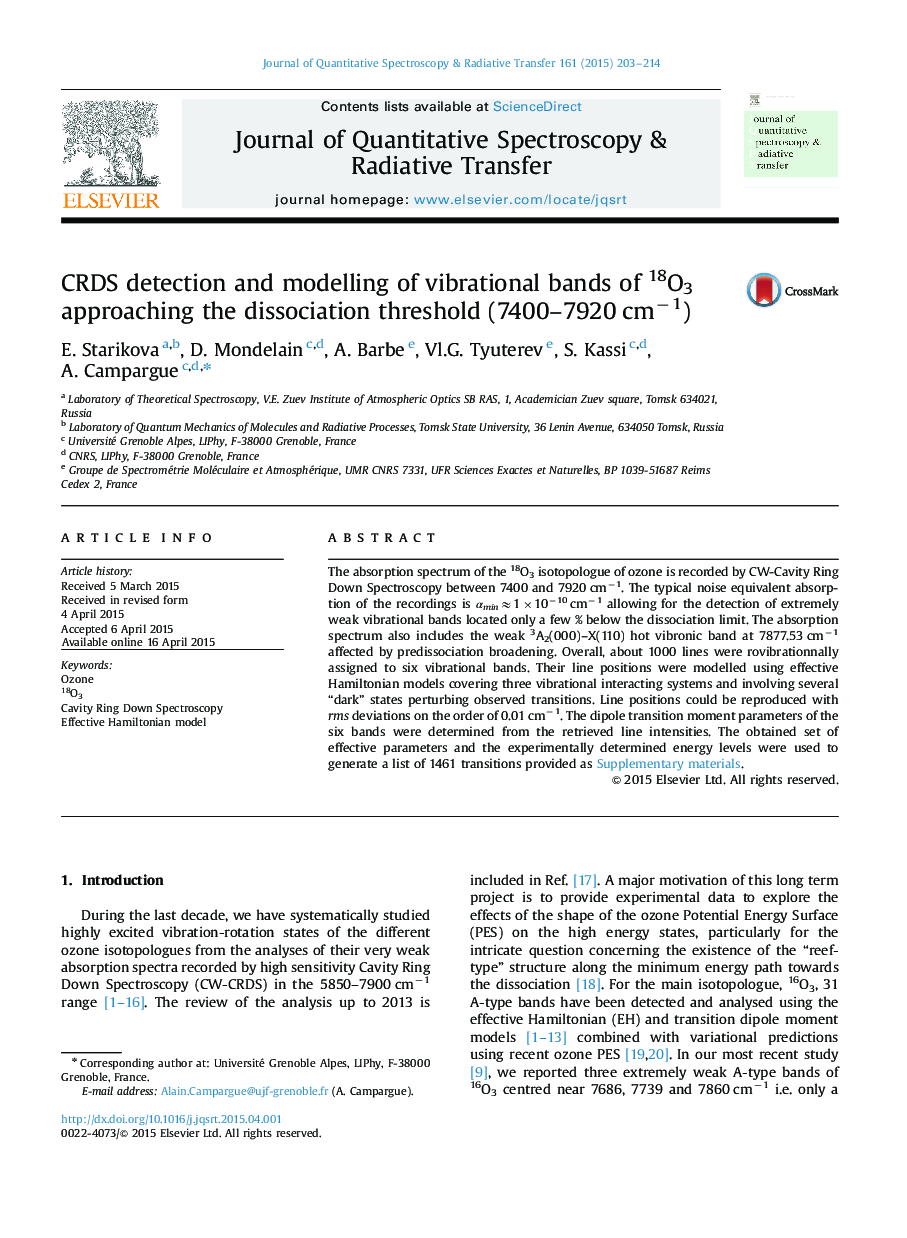| Article ID | Journal | Published Year | Pages | File Type |
|---|---|---|---|---|
| 5427880 | Journal of Quantitative Spectroscopy and Radiative Transfer | 2015 | 12 Pages |
â¢Cavity Ring Down Spectroscopy of 18O3 between 7400 and 7920 cmâ1.â¢1017 Transitions assigned to six A-type vibrational bands.â¢Upper vibrational states located a few % below the dissociation limit at 8560 cmâ1.â¢Effective operator modelling of the spectra.â¢Good agreement with ab initio values for the band centres and rotational constants.
The absorption spectrum of the 18O3 isotopologue of ozone is recorded by CW-Cavity Ring Down Spectroscopy between 7400 and 7920 cmâ1. The typical noise equivalent absorption of the recordings is αminâ1Ã10â10 cmâ1 allowing for the detection of extremely weak vibrational bands located only a few % below the dissociation limit. The absorption spectrum also includes the weak 3A2(000)-X(110) hot vibronic band at 7877.53 cmâ1 affected by predissociation broadening. Overall, about 1000 lines were rovibrationnally assigned to six vibrational bands. Their line positions were modelled using effective Hamiltonian models covering three vibrational interacting systems and involving several “dark” states perturbing observed transitions. Line positions could be reproduced with rms deviations on the order of 0.01 cmâ1. The dipole transition moment parameters of the six bands were determined from the retrieved line intensities. The obtained set of effective parameters and the experimentally determined energy levels were used to generate a list of 1461 transitions provided as Supplementary materials.
